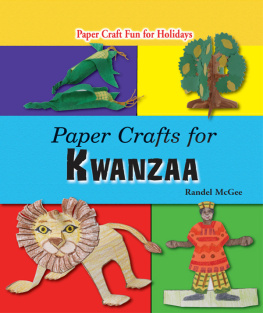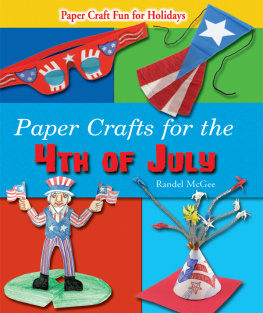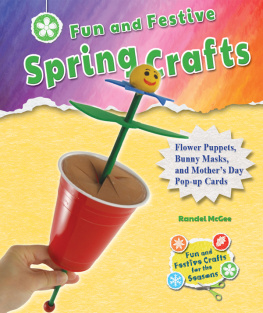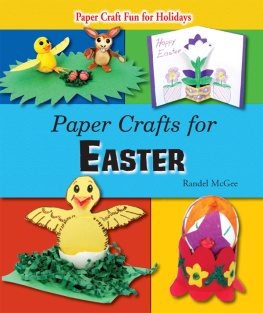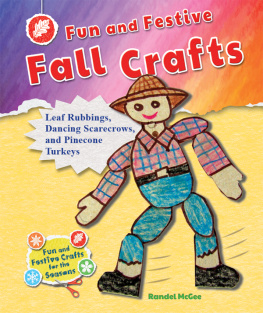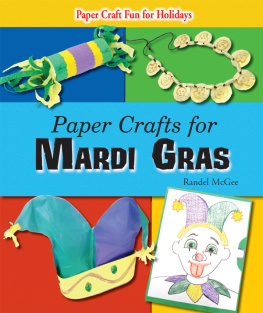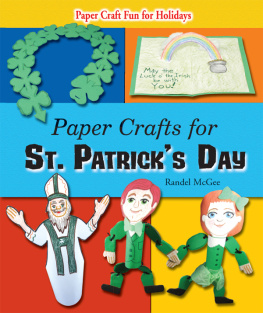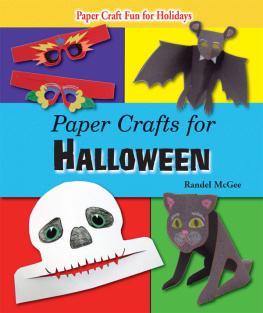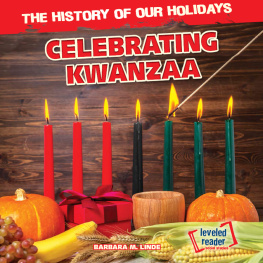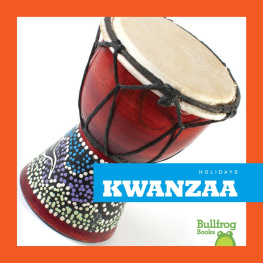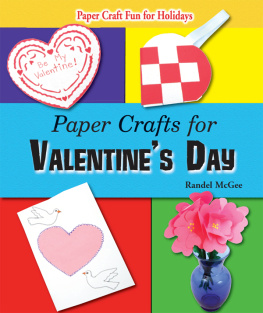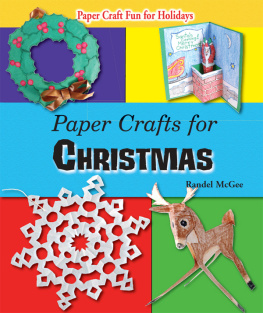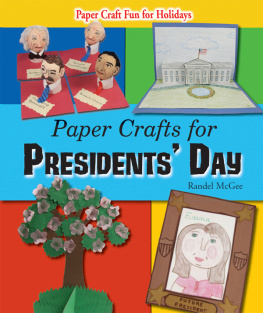UNITY! PURPOSE! CREATIVITY!
Do you want to make your own kinara pop-up card? The kinara is an important part of Kwanzaa. Follow storyteller Randel McGee as he explores Kwanzaa in Paper Crafts for Kwanzaa. Learn to make a lion, a mkeka (the mat used in Kwanzaa celebrations), and more!
Although a relatively new celebration, Kwanzaa exemplifies basic principles that all people should live by. Read about the holiday and have fun with children making the crafts. This is an excellent combination of mental activity reinforced by practical applications.
Duncan R. Jamieson, Ph.D., Professor of History, Ashland University
Paper Crafts for Kwanzaa is an excellent guide to enjoying Kwanzaa. For readers eight years and up, this book shows how to celebrate the principles and days of Kwanzaa in style.
Dr. Russell L. Adams, Professor Emeritus, Afro-American Studies, Howard University
ABOUT THE AUTHOR
Randel McGee is a storyteller, puppeteer, ventriloquist, and paper-cutting artist. He performs all over the world, sharing his paper-cutting stories with children and adults. This is his first series with Enslow Publishers, Inc.

Kwanzaa is a holiday celebrated by people in many countries around the world. It was started in 1966 by Dr. Maulana R. Karenga, a professor of Black Studies at California State University, Long Beach. It is based on harvest celebrations from the people of Africa. Swahili is an African language, and it is the language that is used to describe the principles (rules for good behavior), symbols, and actions that go with Kwanzaa. While Kwanzaa has African roots, its principles are ones celebrated by all people.

Kwanzaa, which means the first fruits, in Swahili, is a week-long celebration that begins on December 26 and ends January 1. Kwanzaa is not considered a religious holiday, but it is a time to celebrate ones family, achievements, and heritage. It is a time to think about positive values, how to help each other, setting goals, and improving your community. Use your creativity to make the following crafts to help you celebrate Kwanzaa.

The kinara is the candleholder of Kwanzaa. It is decorated with seven candles: three red candles on the left, a black candle in the middle, and three green candles on the right. Black, red, and green are the colors of Kwanzaa. Black stands for the African people, red symbolizes continuing struggle, and green represents future for the people.
This pop-up kinara and its candles are made from paper, and tissue paper is used for the flames. It can be used as a greeting card, a decoration, or both.
- tracing paper
- pencil
- white card stock paper (8 1/2 inch x 11 inch)
- markers or crayons
- scissors
- white glue
- construction paper of any color (8 1/2 inch x 11 inch)
- yellow tissue paper
1. Use tracing paper to transfer the pattern from to the white card stock paper.

2. Color the candles of the design with markers or crayons. Make three red candles on the left, a black candle in the middle, and three green candles on the right. Decorate the kinara and the inside of the card as you wish (See A).
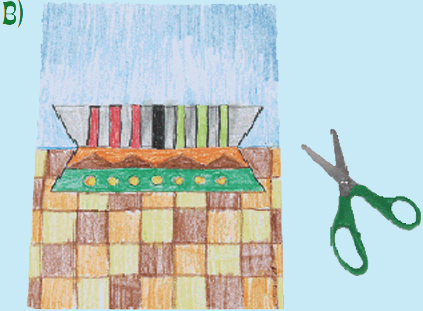
3. Cut the solid lines of the pattern (See B).

4. Fold the card stock along the dotted lines (See C).
5. Put glue only along the edges of the colored paper. Glue the colored construction paper to the back of the card stock.
6. Cut seven flame shapes from the yellow tissue paper. See for the pattern.
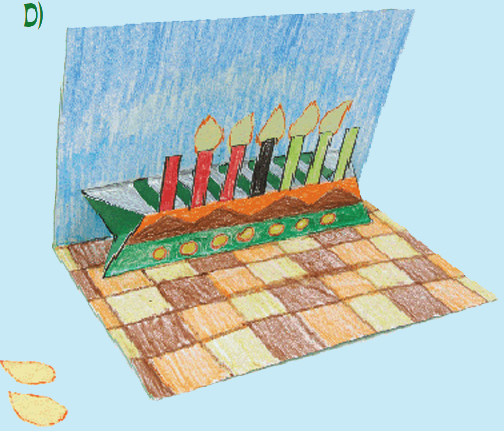
7. Glue the flames to the top of the candles (See D). Let dry.

8. Write a greeting on the outside or inside of the card.
The mkeka is the woven mat that decorates the Kwanzaa table. It is usually woven from straw or other natural fibers. It holds the other symbols of Kwanzaa: the kinara, the seven candles, the unity cup, the ears of corn, the basket of fruits and vegetables, and the useful gifts. Here is a mat that you can weave from paper for your Kwanzaa table.
- ruler
- pencil
- one sheet of yellow construction paper (12 inch x 18 inch)
- one sheet of light brown construction paper (12 inch x 18 inch)
- scissors
- white glue

1. Use a ruler and pencil to draw lines that are 2 inches apart and 18 inches long on the yellow construction paper. Use a ruler and pencil to draw lines that are 2 inches apart and 12 inches long on the light-brown construction paper.
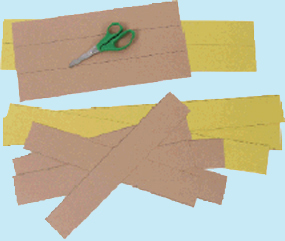
2. Cut along the lines on both sheets of paper.

3. Weave all the strips of light-brown paper and all the strips of yellow paper together.

4. Glue all loose ends. Let dry.
An ear of corn called muhindi is placed on the mat for each child that lives in the home. Even if there are no children in a home, an ear of corn is placed on the mkeka to remind everyone that children are the hope for the future. The ear of corn here is made of paper and will stay fresh for a long time.
- toilet tissue tube
- white glue
- scissors
- yellow tissue paper (7 inches x 9 inches)
- yarn (yellow or tan)
- markers or crayons (optional)
- green crepe paper
- clear tape

1. Lightly coat the toilet tissue tube with glue and wrap the yellow tissue around the tube. You may need to cut the tissue paper to about 7 inches x 9 inches, and it should extend beyond the tube about 2 inches on both ends. Glue the yellow tissue along the open seam (See A). Let dry.

